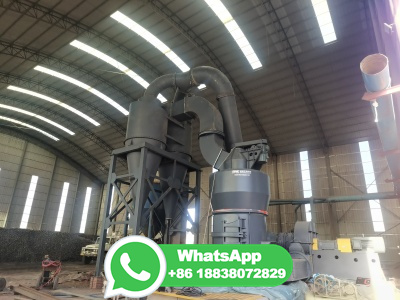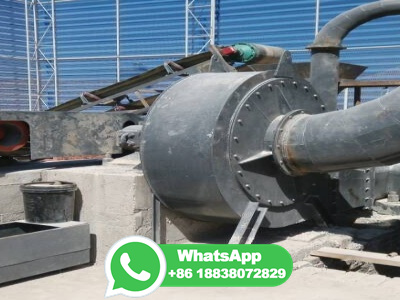
The process of underground coal gasification (UCG) is considered to be one of the forms of clean coal technologies for obtaining gaseous fuel and synthesis gas from hard coal (Burton et al. 2006; Bhutto et al. 2013; Cough 2009).In the situation of increasingly smaller coal resources available for economically justified mining and the unfavorable impact of coal combustion on the environment ...
WhatsApp: +86 18203695377
The technical feasibility of underground coal gasification (UCG) has been established through many field trials and laboratoryscale experiments over the past decades. However, the UCG is site specific and the commercialization of UCG is being hindered due to the lack of complete information for a specific site of operation. Since conducting UCG trials and data extraction are costly and ...
WhatsApp: +86 18203695377
Geological Model of the Gasifier. The gasifier mainly consists of two parts: a coal seam and the surrounding rock. The temperature distribution in the gasifier, the nonuniformity and instability of the gasification reaction, and the heterogeneity and anisotropy of the surrounding rock determine that the geological model of the gasifier must be threedimensional rather than simply two ...
WhatsApp: +86 18203695377
Underground coal gasification (UCG) is the process of directly recovering energy as combustible gases such as hydrogen and carbon monoxide by combusting unmined coal resources in situ. The UCG process is an invisible phenomenon, in which fracturing activity at high temperature (>1000 °C) in coal seams expands the gasification zone and increases the combustible components of the product gas.
WhatsApp: +86 18203695377
The growth state of the combustion cavity during underground coal gasification (UCG) affects the gasification process's efficiency, stability, and accurate monitoring and control. In this study, a simulation experiment of UCG was performed, and a horizontal coaxial gasification channel was drilled based on the constructed artificial coal seam.
WhatsApp: +86 18203695377
Underground coal gasification (UCG) ... The notable products in a coal pyrolysis process encompass CO, H 2, CH 4, CO 2, H 2 O, char, and to a lesser amount tar and hydrocarbons. It is thus evident that the generation of H 2 occurs principally in the reduction and pyrolysis categories.
WhatsApp: +86 18203695377
The process of underground coal gasification is accompanied by heating of the roof and floor rocks of the coal bed and subsurface waters. It is known that an increase of temperature of subsurface waters leads to a change in the chemical and physical properties of water: a) the solvent power of water increases; b) the density of water decreases ...
WhatsApp: +86 18203695377
CO2 sequestration and underground coal gasification with horizontal wells. Pramod Thakur, in Coal Bed Methane (Second Edition), 2020. Introduction. Underground coal gasification (UCG) is an industrial process, which converts coal into product gas. UCG is an in situ gasification process, carried out in nonmineable coal seams using ...
WhatsApp: +86 18203695377
In the underground coal gasification (UCG) process, a feasible method for the redn. of CO2 emissions is to capture the CO2 present in syngas and reinject it as one of the gasification agents, which is called CO2 recycling. In this process, CO2 partially replaces steam as a gasification agent, which is of particular importance in areas lacking ...
WhatsApp: +86 18203695377
8. Application to underground coal gasification (UCG) UCG, a clean coal technology, is widely understood as a disruptive mining method that is efficient and environmentally benign. This method extracts deep and stranded coal by performing complex gasification reactions insitu within the coal seam.
WhatsApp: +86 18203695377
The underground coal gasification (UCG) process represents a modern and effective coal mining technology that enables coal energy extraction through thermic decomposition. The coal is transformed into syngas by oxidizers (, air, technical oxygen, or water steam) and is injected into a georeactor. The produced syngas is exhausted on the surface, where it is transformed into the desired form ...
WhatsApp: +86 18203695377
In underground insitu coal gasification, gas tightness is relative, and gas leakage is absolute. From proper preparation of the gasifier to operation and underground coal gasification work, the technology can reduce the loss of gas leakage caused by structure and process.
WhatsApp: +86 18203695377
Underground coal gasification (UCG) is an industrial gasification process, which is carried out in nonmined coal seams. It involves injection of a gaseous oxidizing agent, usually oxygen or air, and bringing the resulting product gas to the surface through production wells drilled from the surface.
WhatsApp: +86 18203695377
During deep underground coal gasification, the semicoke produced by the pyrolysis of dense coal cores is an important material for its gasification and combustion. In this paper, pressurized pyrolysis experiments were carried out on dense coal cores at 700 °C and pressures of 1, 2, and 3 MPa using a shaft furnace. The resulting semicoke and raw coal were analyzed using the characterization ...
WhatsApp: +86 18203695377
Underground coal gasification (UCG) is a gasification process used to produce gas from coal in situ by injecting air or oxygen into nonmined coal seams and extracting the product gas via surface wells. The resulting synthetic gas ("syngas") can be used to produce electricity, as well as chemicals, liquid fuels, hydrogen and synthetic natural gas.
WhatsApp: +86 18203695377
Coal is an important source for power generation, currently supplying 41% of the global electricity demand. Also significant quantities of coal are employed in metallurgical processes, gasification, and cement industries as well as raw materials for activated carbon and some other industrial purposes [1].The limitation of the conventional coal mining methods for extracting seams located at ...
WhatsApp: +86 18203695377
Underground coal gasification (UCG) hydrogen production (UCGH 2) can convert deep coal resources difficult to mine into hydrogen, its economic performance needs to be investigated so the application prospect can be paper take hydrogen production with capacity of billion Nm 3 /a as objective, based on simulation results, comparative technoeconomic analysis was conducted ...
WhatsApp: +86 18203695377
In this study the characteristics of Turkish lignite for underground coal gasification process was experimentally investigated in a laboratory scale ex situ reactor. A rectangular prism shaped ex ...
WhatsApp: +86 18203695377
The Controlled Retracting Injection Point (CRIP) process for underground coal gasification (UCG) was successfully demonstrated during the Rocky Mountain I (RM I) field test conducted in the winter of 198788 near Hanna, Wyoming. The basic features for the CRIP process are its ability to maintain oxidant injection low in the coal seam by ...
WhatsApp: +86 18203695377
The Controlled Retracting Injection Point (CRIP) process for underground coal gasification (UCG) was successfully demonstrated during the Rocky Mountain I (RM I) field test conducted in the winter of 198788 near Hanna, Wyoming. The basic features for the CRIP process are its ability to maintain oxidant injection low in the coal seam by ...
WhatsApp: +86 18203695377
Underground Coal Gasification (UCG) takes advantage of the same chemical reactions of coal to produce product gases, as those occurring in conventional gasifier reactors. The main difference is that in UCG the underground coal seam itself becomes the reactor, so that the gasification of the coal takes place underground instead of in a manufactured gasification vessel at the Obviously ...
WhatsApp: +86 18203695377
Underground coal gasification (UCG) converts coal insitu into a gaseous product, commonly known as synthesis gas or syngas through the same chemical reactions that occur in surface gasifiers. ... CO2, and H2O (steam), with many of the coal impurities converted to gaseous species such as H2S and NH3. The gasification process is typically ...
WhatsApp: +86 18203695377
Underground coal gasification (UCG) converts coal in place (underground) into a gaseous product, commonly known as ... • UCG is not a steadystate process, and both the flow rate and the heating value of the syngas will vary over time. Environmental Management UCG may impact groundwater. Also, the
WhatsApp: +86 18203695377
Underground coal gasification processes, in comparison to the conventional coal into energy conversion methods, are attractive in many aspects. The notable benefits in the UCG process include the low environmental burden, the lack of solid and gaseous emissions to the environment and low investment costs. ... Underground coal gasification is a ...
WhatsApp: +86 18203695377
Underground coal gasification (UCG) is a promising option for the future use of unworked coal. UCG permits coal to be gasified in situ within the coal seam, via a matrix of coal is ignited and air is injected underground to sustain a fire, which is essentially used to "mine" the coal and produce a combustible synthetic gas which can be used for industrial heating, power ...
WhatsApp: +86 18203695377